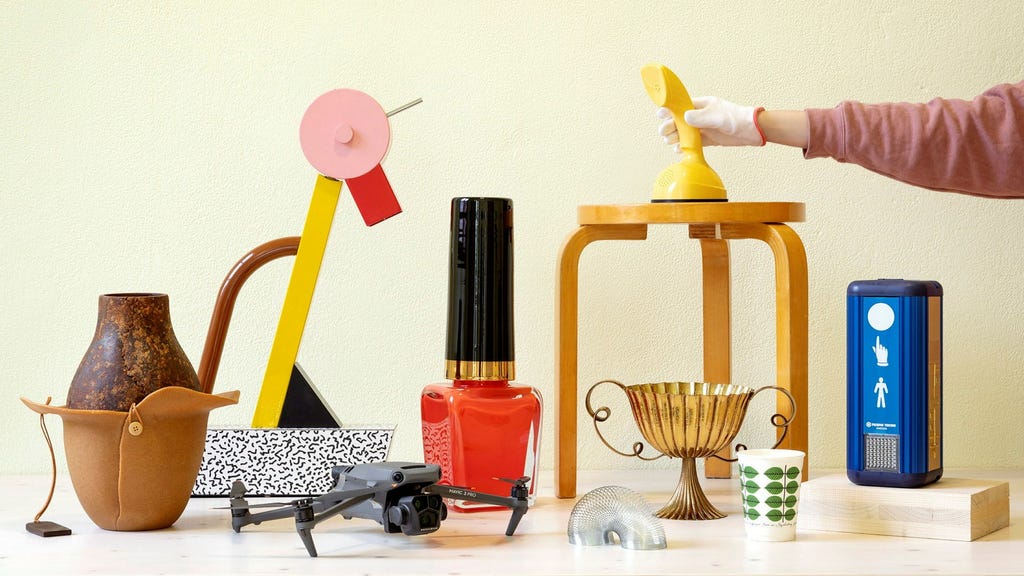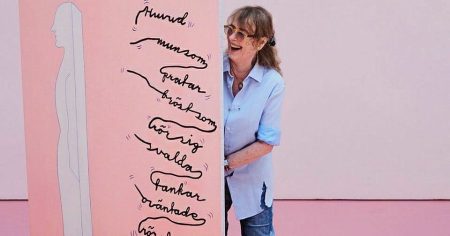The Röhsska Museum in Gothenburg, Sweden’s sole museum dedicated to design, crafts, and fashion, has unveiled a new permanent exhibition, ”Design Histories,” after a two-year closure. This expansive exhibition, located on the ground floor, showcases over 500 objects from the late 19th century onwards, encompassing a diverse range of items from everyday utensils and industrial design to furniture, clothing, and jewelry. Departing from the chronological approach of its predecessor, ”Form History,” ”Design Histories” organizes its vast collection thematically, exploring six key concepts: Desire, Innovation, Change, Creativity, Efficiency, and Belonging. The exhibition’s design, conceived by the architecture firm OMMX, features light wood in glass displays and podiums, complementing the museum’s existing architecture and creating bright, airy spaces. This aesthetic contrasts with the more traditional displays on the upper floors, which house exhibitions such as ”18th-Century Forms” and ”The Baroque Chamber,” as well as the recently updated ”Inspiration East Asia” featuring Chinese crafts alongside works by Nordic designers.
The thematic organization of ”Design Histories,” while ambitious, presents challenges in establishing clear connections between the diverse objects on display. The ”Desire” room, for example, juxtaposes a 1972 queue number dispenser, a 1962 Dieter Rams record player, a 2022 coat made from recycled blankets, a 1952 tea service, and a 1979 wooden toy train, leaving visitors struggling to discern a unifying narrative. Similarly, the ”Creativity” section displays a 1997 linen suit by Martin Margiela next to a 1899 majolica garden stool, prompting questions about the intended connection. This pattern continues throughout the exhibition, with the ”Innovation” theme featuring a mix of plastic chairs, bentwood furniture, 3D scanning, jacquard weaving, Märta Måås-Fjetterström rugs, pressed glass, ball bearings, and Philippe Starck’s citrus press, creating a sense of thematic disjunction despite the presence of explanatory labels.
The lack of chronological context further complicates the visitor’s understanding of design evolution and stylistic relationships. The ”Belonging” section, for instance, includes a 1948 Italian Vespa, an electric scooter, a 2008 cross-stitch embroidery, and a ubiquitous Swedish pedestrian crossing signal box, leaving the visitor to ponder the rationale behind these groupings. Why is the signal box placed under ”Belonging” rather than ”Innovation”? Why is a robotic vacuum cleaner exhibited in ”Efficiency” instead of ”Change”? These inconsistencies raise questions about the curatorial choices and the underlying message the exhibition aims to convey. The placement of conceptual textile art, exemplified by Severija Inčirauskaitė-Kriaunevičienė’s cross-stitch embroidery on a car door, further contributes to the sense of thematic disarray.
While ”Design Histories” offers a visually stimulating experience with a wide array of objects, the lack of clear connections and historical context undermines its educational potential. Displays of jewelry, ceramics, and glass objects, accompanied by labels providing information on their creators and dates, are aesthetically pleasing but offer limited insight into production techniques, materials, or stylistic choices. Although the exhibition incorporates text panels addressing contemporary issues such as environmental concerns, new technologies, ergonomic design, body image, LGBTQ+ issues, feminism, racial biology, and climate change, this information feels fragmented and disconnected from the objects on display. The overall impression is one of trendiness and an eagerness to engage with contemporary discourse, potentially at the expense of a deeper exploration of design history.
The exhibition catalogue, ”Design Histories: New Perspectives on a Collection,” unfortunately fails to provide the missing context. Instead of offering a coherent narrative, the catalogue largely consists of conversations between researchers, designers, and journalists on various topics, not all directly related to design. Only the final hundred pages offer some insight into the individual objects, describing their background and significance. While the museum’s online introduction emphasizes the pervasiveness of design in everyday life and promises a journey of discovery through the exhibition, the lack of background information and clear connections hinders the visitor’s ability to fully appreciate the ”exciting links between different eras and styles” that the museum intends to highlight.
Ultimately, ”Design Histories,” despite its ambitious scope and visually appealing presentation, falls short of its potential due to its fragmented approach and lack of historical grounding. The thematic organization, while potentially offering fresh perspectives, fails to establish clear connections between the diverse objects on display. The absence of a chronological framework further complicates the visitor’s understanding of design evolution and stylistic relationships. While the exhibition touches on contemporary issues and trends, this is done at the expense of a more in-depth exploration of the historical context and the complex processes that shape design. A more coherent narrative, incorporating historical timelines and explanations of design processes, would have significantly enhanced the exhibition’s educational value and allowed visitors to fully appreciate the rich history and interconnectedness of design, crafts, and fashion.














